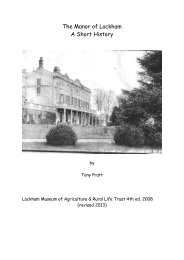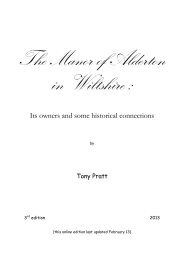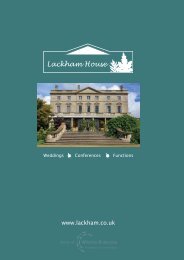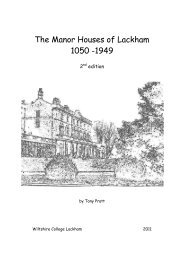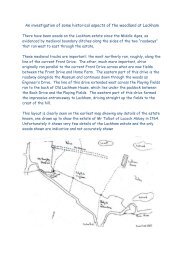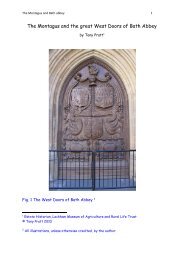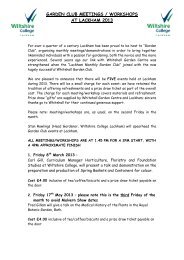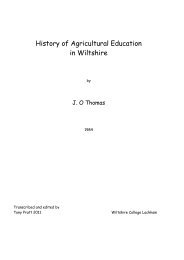Vol 1: The Bluets - Lackham Countryside Centre
Vol 1: The Bluets - Lackham Countryside Centre
Vol 1: The Bluets - Lackham Countryside Centre
Create successful ePaper yourself
Turn your PDF publications into a flip-book with our unique Google optimized e-Paper software.
<strong>The</strong> <strong>Bluets</strong> 94<br />
Wakeman‘s translation of this agreement). He notes that<br />
<strong>The</strong> Martells were lords of Llanviagel, Rogeat ,and<br />
LLanwanches, in the same neighbourhood of the Manor of<br />
Langston, which was held by the <strong>Bluets</strong> from the lordship<br />
of Caerleon by the service of one knight‘s fee 401<br />
Denholm-Young has argued 402 , convincingly, that by this time the<br />
station of esquire didn‘t necessarily involve personal service, although<br />
in this case it sounds as if it did. However this may be because Martel<br />
wasn‘t a squire. Coss has suggested that in the original French the<br />
word most commonly used for a sub-knightly retainer is not esquire,<br />
403<br />
the expected vernacular equivalent of armiger, but valet . “John<br />
Bluet retained William Martel seon valet and the valet has both<br />
household and military connotations”. Coss points out 404 that Valet<br />
was undoubtedly a term employed by the magnates to denote retinue<br />
membership. It is noted that John Martel, not a knight, witnessed an<br />
[undated 405 ] charter of Bartholomew de Mora, along with Sir William<br />
Bluet, but whether John Martel was related to William Martel is<br />
unknown, it seems very likely.<br />
Sir John is known to have borne the device that is now familiar for the<br />
<strong>Bluets</strong> of Wiltshire (Fig. 1b). This is different from the two wings seen<br />
before (Figs 1a and 15), the <strong>Bluets</strong> arms had changed sometime between<br />
c1285 (the date of William‘s arms in St. George‘s Roll) and 1297. One<br />
translation also appear in Morgan, O & Wakeman, T (1864) Notices of Pencoyd<br />
Castle and Langeston Monmouth and Caerleon Antiquarian Ass.<br />
401<br />
Wakeman T (1847) ibid p143. This whole section is a good example of how two<br />
researchers can complement one another – Tony located the record of the original<br />
document in the British Library and then, completely independently and many<br />
months later, Karen Repko found the article by Wakeman. It was only when we<br />
compared the information that we realised they dealt with the same document!<br />
402<br />
Denholm-Young, N (1969) <strong>The</strong> County Gentry in the Fourteenth Century with<br />
Special references to the Heraldic Rolls of Arms Clarendon press<br />
403<br />
Coss, P (2003) <strong>The</strong> Origins of the English Gentry CUP p225<br />
404<br />
Coss, P (2003) ibid p226<br />
405<br />
Calendar Charter Rolls vol 3 Edw1 Ewd II 1300-1326 p98, this record was for a<br />
re-inspection of the original charter. Internal evidence from the witnesses of the<br />
original would suggest a date around 1260-1270. This charter was seen above



